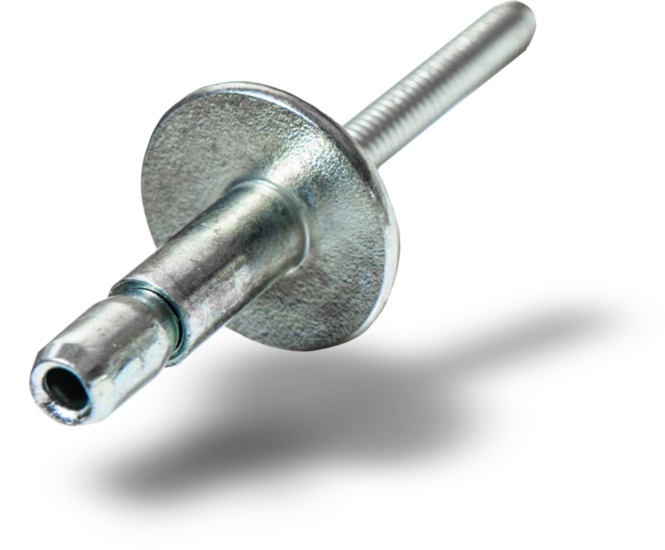Blind rivets


GESIPA® blind rivets come in a wide range of forms, materials, shapes, lengths and even colours. Depending on the application you have in mind for the GESIPA® blind rivet, you can choose to order a standard blind rivet for delivery straight from the GESIPA® warehouse or bespoke blind rivet designed especially for your application. Thanks to the perfectly coordinated shapes and premium materials of the individual components, GESIPA® blind rivets guarantee a high-quality, neat connection that
looks good every time. GESIPA® blind rivet technology has come to be an essential part of many modern industrial production processes requiring joining technology owing to its high levels of cost-effectiveness and versatility. It combines a number of advantages in one solution, providing access to the blind side in an application, reliably joining a wide range of materials with lasting effect, including more sensitive ones, and documenting the setting process where required.
Any questions?
Which may be the best rivet for your application? Do not hesitate to contact us -we will be happy to advise you!
GESIPA® blind rivets – terminology
The blind rivet consists of two parts: the rivet body (1) and the mandrel (2). The rivet body consists of the setting head (3) and the shaft (4). The setting head is found on the processing side and is variable in diameter and shape. There are dome, countersunk and large flange versions. The rivet body is available in different lengths depending on the material thickness to be riveted. The rivet mandrel is used to deform the rivet body. It contains the predetermined breaking point (5) This is where the rivet mandrel breaks after the rivet has deformed. The mandrel head (6) is the remaining part of the rivet mandrel in the rivet body. The residual mandrel (7) is the part of the rivet mandrel that is disposed of from the set rivet via the blind rivet setting tool.
GESIPA® blind rivets – lasting connections
During the setting process, the mandrel body is moved using the setting tool jaws, deforming the hollow rivet until it is firmly positioned in the component as predefined. In the end, the mandrel body breaks off at the specified point (the predetermined breaking point) and can be disposed of via the recycling system. The rest mandrel is the spent mandrel left behind in the hollow rivet and can provide an additional locking function depending on the application in question.
Find the right blind rivet
You can buy our blind rivets from selected specialist retail partners. Are you an industrial manufacturing company and process large quantities of blind rivets? Simply get in touch with us. We will help you select the right blind rivet for your application.
contaCt
Further blind riveting products
Perfect processing tools and joining elements for every application
